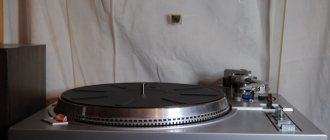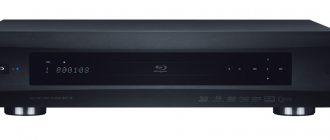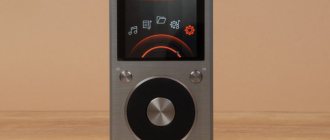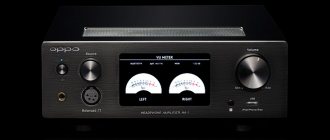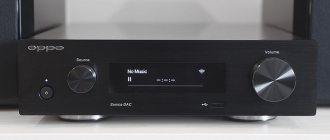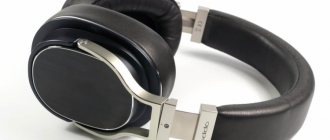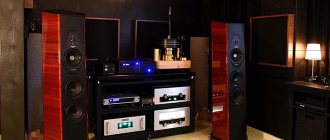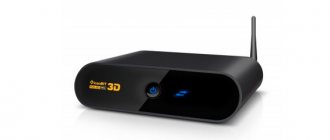Oppo BDP-105D or Dune HD Base 3D?
A smart choice for a “smart” home They usually try to give the review a title that will maximally reveal the content of the article or at least indicate its subject. This is especially true for articles of a technical nature. Our case allows us to use this rule, which is what we did. But first, a short introduction.
The idea of creating such a review arose thanks to the so-called “insider” information, but verified and quite interesting. The fact is that a considerable (if not most) part of the sales of Hi-End multimedia equipment falls on the installers sector - companies implementing smart home projects, which include a wide variety of equipment: climate control systems, security and fire-fighting equipment, systems remote control. And, of course, home theaters. The total cost of all equipment can reach millions of rubles, or even tens of millions. However, at the stage of selecting multimedia equipment, an interesting contradiction often arises: the installer, who is absolutely unlimited in funds, suddenly begins to save on the source of multimedia content. Simply put, he gives preference to a familiar product instead of paying attention to more expensive brands and telling the customer about them. This curiosity can be explained quite simply: both the customer and the performer are, first of all, people, with their knowledge, habits and convictions. If previous knowledge and habits contain information about the existence of reliable, proven equipment, then the choice usually ends with this equipment - why look for something new? In the meantime, existing alternatives may be just as reliable and even better performing or more functional.
So what is the installer guided by when choosing a media player? The cost factor can be immediately discarded, since it has almost no effect on the overall budget of the projects. Ask the installer's representatives? This is also not an option, because the answer will probably be the standard “customer’s request.” What are the true reasons for choice, other than the notorious habit? Perhaps, without studying the subject, it is impossible to answer this question. We hope that the devices we have will help us visually compare them not only in terms of performance or reliability, but also evaluate the purely consumer qualities of each option.
- Design
- Settings
- Exploitation
- conclusions
Design
The reason why such weighted devices were chosen is described in the preface to the article. It’s worth adding: not long ago a fairly detailed review of the Oppo BDP-103D media player was published, which is in many ways similar to the device of this brand discussed in this article. In addition to this information, the reader is given the opportunity to get to know the player even better, live, so to speak:
As for the Dune HD Base 3D, reviews of several models of this brand were also published on the pages of iXBT.com, and each time these articles emphasized, if not the elitism of this equipment, but the fairly high quality of its manufacture and reliability in operation.
Let’s evaluate the contents of the front panels of both players, because these panels are not only the “face” of the equipment, but also the only easily accessible way to quickly connect some gadgets and control the device.
| Oppo BDP-105D | Dune HD Base 3D |
|
|
Note that, unlike Dune, the Oppo player’s control buttons are touch-sensitive (some people like it, some don’t - it depends on preferences); headphone jacks have different diameters; The Dune player is equipped with a memory card slot, while the Oppo does not have such a slot. But it has an important advantage: video inputs. In principle, Dune does not have such connectors, but this is understandable, because Oppo is essentially a player with receiver functions. This video input, located on the front panel of Oppo, supports MHL (Mobile High-Definition Link) technology, which, in addition to standard HDMI functions, also allows you to recharge the connected mobile device. Player displays also differ, primarily in their information content. Oppo displays quite a lot of information about the content being played, while Dune is much more concise.
| Oppo BDP-105D | Dune HD Base 3D |
It should be noted that at the top of the Dune display there are some symbols that should indicate the current playback mode and other parameters, but we were unable to display these symbols. Most likely, there is a universal display installed here, used in different models of players, but whether to activate certain areas of the display or leave them unused is the decision of the developer. Apparently, they decided not to use it.
The rear panel traditionally contains interfaces that are rarely connected, mainly when the equipment is first installed in the rack. Here the difference between the players is huge. This is also understandable: Oppo presents itself primarily as a device for audiophiles, where almost the main emphasis is on all kinds of audio connectors. For example, why does a player need XLR audio outputs? It turns out to connect an integrated sound amplifier, where the player will act as a preamplifier (DAC). The same applies to the USB DAC port, which allows you to connect an external digital-to-analog converter that is equipped with a USB connector.
| Oppo BDP-105D | Dune HD Base 3D |
|
|
We also note that Oppo has two HDMI video outputs (one of them supports Darbee technology, which was discussed in detail in the mentioned review). As for controlling the Oppo player, an RS-232 connector can be used here, which is also necessary to control the player in a single “smart home” system such as Crestron or AMX.
Unfortunately, the latest “news from the front” makes us think about our attitude towards the Dune brand, even to the point of reconsidering this very attitude. This statement does not convey the author’s bias towards a specific brand (the author has no relationships with brands at all). This is a quick impression left from studying the thematic thread of the iXBT.com forum. If we summarize the complaints that users of Dune brand equipment now have, they can be reduced to insufficiently effective technical support, as well as to the quality of the electronic components from which the players are assembled (we are talking mainly about the inexpensive electronic content of the internal power supply - cheap capacitors with break down over time). At the same time, it is impossible to dispute the following statement: in this price range, there is virtually no competition for Dune. But we - remember the introduction to the article - are not limited by money.
The Oppo player is more than three times heavier than the Dune, what is the reason for this? Let's look under the lid.
| Oppo BDP-105D | Dune HD Base 3D |
This is the explanation for such a significant difference in the cost of products. If Dune electronics are mostly mid-level OEM hardware, then Oppo components are the elite in the transistor-capacitor world. The power supply received special attention from the developers - Oppo uses a specially designed non-pulse transformer. This is described in sufficient detail in the video presented above.
The main technical characteristics of the devices are given in the following table:
| Oppo BDP-105D | Dune HD Base 3D | |
| Interfaces | ||
| Video inputs |
| No |
| Audio inputs |
| No |
| Video outputs |
|
|
| Audio outputs |
|
|
| Net |
|
|
| USB |
|
|
| Data sources |
|
|
| Other characteristics | ||
| Dimensions | 430×311×123 mm, 7.9 kg | 430×252×55 mm, 2.45 kg |
| 3D video support | Yes, full | |
| Display | matrix | |
| power unit | built-in | |
| Price | ||
| Average price according to Yandex.Market | T-10855277 | T-9250561 |
| Offers based on Yandex.Market data | L-10855277-10 | L-9250561-10 |
Settings
The process of loading devices until they are fully ready takes different times, and Oppo is in the lead here: 20 seconds to turn on, while Dune comes to life a little longer, 35 seconds.
To view in a larger size, click the "Original Size" button
Let's note that the main screen of Dune is a little more informative - here you have the time with the date, and the current weather outside the window, and the geographic location is determined automatically by the IP address. There is also a difference in the arrangement of this screen: Oppo displays all installed Internet services at the bottom, while Dune modestly hides them under one of the icons in the scrollable list. But we’ll talk about services later, but for now let’s compare the key settings of both players. Settings - they always indicate the potential capabilities of the device, at least theoretically.
The main settings menu in the players looks different; Oppo presents it in a strict tabular design, while Dune presents it in a visually colorful one.
| Oppo BDP-105D | Dune HD Base 3D |
We note the presence of detailed settings for HDMI outputs in the Oppo player. These settings are individual for each of the two interfaces. Compared to such rich settings, the image parameters in the Dune player look somewhat pale.
| Oppo BDP-105D | Dune HD Base 3D |
In the additional video output settings, Oppo suggests changing the “default” parameters of Darbee technology, which is available only on the first HDMI output.
| Oppo BDP-105D | Dune HD Base 3D |
The number of sound settings also differs dramatically, which is explained by the different purposes and functionality of the devices: Oppo provides audiophile sound right out of the box.
| Oppo BDP-105D | Dune HD Base 3D |
Additional audio parameters are available only in the Oppo player; they allow you to customize the location of the speaker systems.
| Oppo BDP-105D |
But Dune has detailed settings for pre-installed applications, while Oppo has settings for only two services, Netflix and Vudu, which refuse to work with Russian IP addresses.
| Dune HD Base 3D |
In the network settings, you should note an important function that is available in Dune and absent in Oppo: the ability to create a Wi-Fi access point. If Dune is connected to the router by cable, then there is an excellent opportunity to organize such a point using the wireless network adapter of the player itself.
| Oppo BDP-105D | Dune HD Base 3D |
Moreover, the point created by the Dune player supports 802.11b/g/n standards.
Other settings related to general functionality - screen saver parameters, order and method of content playback - are approximately the same in both players and can be “scattered” across various sections of the settings menu.
To get full functionality, it is advisable to connect a system drive to the Dune player; a fast flash drive with a capacity of 2 or more gigabytes can play its role, but this is not a problem - the player has three USB ports. But with the full functionality of the Oppo player, the situation is not so simple. The reason for this complexity lies in the notorious licenses. In order for Oppo to freely play “forbidden” formats, it is necessary to modify the player’s firmware. This is a non-trivial task, but craftsmen have found an ingenious solution: software “jailbreak”. Similar to those that are installed on some “branded” devices in order to remove artificial restrictions imposed by the developer (Jailbreak translates as “jailbreak”). We have such a jailbreak - it’s an ordinary bootable flash drive, which should be connected to one of the player’s USB ports before turning it on. After which the system will boot into a mode where there are no taboos.
It is worth recalling once again the significantly larger amount of information provided by the Dune player. This manifests itself not only during video playback, but also in the organization of the file browser, where detailed information about the file under the cursor is displayed.
| Oppo BDP-105D | Dune HD Base 3D |
| Information about the content being played | |
| File Browser | |
In conclusion, let us remind you about the network capabilities of players: of course, Dune is most prepared for the role of a network media player, allowing you to operate files over the network. Unlike the free Dune, the Oppo player does not have the ability to copy or move anything anywhere. There is simply no such functionality. This is a player designed to play content close to existing standards.
Exploitation
First, let's check the devices' ability to correctly play video in the most common video formats today. To do this, we use the collection of video files we have, and we present the playback results in a separate table:
| Format | Container, video, sound | Oppo BDP-105D | Dune HD Base 3D |
| DVDRip | AVI, XviD 720×400 2200 Kbps, MP3+AC3 | plays normally | plays normally |
| Web-DL SD | AVI, XviD 720×400 1400 Kbps, MP3+AC3 | plays normally | plays normally |
| Web-DL HD | MKV, H.264 1280×720 3000 Kbps, AC3 | plays normally | plays normally |
| BDRip 720p | MKV, H.264 1280×720 4000 Kbps, AC3 | plays normally | plays normally |
| BDRip 1080p | MKV, H.264 1920×1080 8000 Kbps, AC3 | plays normally | plays normally |
There were hardly any surprises to be expected here; it was standard, after all. Players equally refuse to play more rare formats that are almost never found on the Internet (for example, RealVideo (*.rm) or FLV with the Sorenson Spark codec). The same thing happens when you try to play a 10-bit video, which is familiar primarily to “anime fans.” If Oppo makes some attempts and displays a pixelated mess instead of a picture, then Dune simply shows a black screen.
| Oppo BDP-105D | Dune HD Base 3D |
The next question that I would like to raise is the question of the true resolution displayed on the screen by the players being compared. Of course, it hardly makes sense to expect a trick from devices of this level, but still. Let's complicate the task: let's display information about the file on top of the test video, consisting of many lines one pixel thick. Who knows, what if the original video will be somehow transformed in this case?
Clicking on the thumbnail will open the full image
| Oppo BDP-105D | Dune HD Base 3D |
No, the version was not confirmed, but this is not surprising. Our equipment does not allow trickery with signal output. These still frames were obtained using a Full HD video capture device - as if we were watching on a similar TV with a resolution of 1920x1080. However, we must not forget about the increasing prevalence of TVs with Ultra HD resolution, the displays of which consist of four times as many pixels: 3840x2160.
I wonder what Full HD players do when they display their Full HD picture on such a TV? Tritely stretch the image twice horizontally and vertically? Or is it the TV that does this? Most likely, this is true, but we know that there are many ways to change the size, and each method has its own characteristics that affect the resulting picture. And these features are not always positive. The Oppo player offers an ideal way out of the situation. An attentive reader will most likely have noticed in one of the above screenshots that the output resolution of the Oppo player can be 4K×2K.
Indeed, the Oppo BDP-105D, although it cannot play back video with a frame size larger than Full HD, is quite ready to broadcast the signal to 4K TVs. We will find out how our players are able to transform a frame for viewing on a 4K TV using the same test video file. True, we will have to do without a 4K signal capture device - we are not yet capable of such equipment. However, a banal microphotograph of a 4K TV display can say no less than a close study of a screenshot.
Clicking on the thumbnail will open the full image
| Oppo BDP-105D | Dune HD Base 3D |
Although comments are clearly unnecessary here, we still note that both players, when connected to a TV, receive the same information about the maximum display resolution, this is done using EDID technology (Extended Display Identification Data - a data format standard containing various information about the monitor). However, the Oppo media player, equipped with a 4K output mode, connects to the TV in exactly this, the maximum resolution for a TV. The Oppo player achieves ideal preservation of the proportions and detail of the picture thanks to the smart frame transformation mechanism coupled with the presence of this output mode.
| Oppo BDP-105D | Dune HD Base 3D |
While the Dune player connects to the TV in the maximum possible 1920x1080 mode, as a result the TV is forced to upscale the image on its own. And you can see how the TV does this in the photograph. It doesn't work out well. Discretely and with some impurities. By the way, analog television looks much worse and “soapier” on this 4K TV than on a Full HD panel. Looks like we've found the reason.
Finally, it’s Darbee’s turn - we can’t help but mention this technology in the light of comparing players. With the help of such a picture transformation tool, the viewer receives a much clearer and deeply saturated image, which differs from a banal change in the sharpness of the frame in that the processing of details is carried out selectively, in accordance with its content. This feature can be useful not only when viewing Full HD content, but also when playing standard definition and low quality videos.
To view in a larger size, click the "Original Size" button
Full still frames can be seen by clicking on the following thumbnails.
| Oppo BDP-105D, Darbee included | Dune HD Base 3D |
The next comparison test, which will probably be done in vain, is checking the correct playback of video files with different frame rates. To do this, we traditionally use a set of test videos with an arrow and a rectangle moving one division per frame (see Methodology for testing video playback and display devices). When testing, we used video with a frame size of 1920x1080, but at different frequencies: from 24 to 60 frames/sec, as well as a video in 3D format (MVC, ISO image of a 3D Blu-ray disc).
The media players in question were connected to the Full HD panel in the mode of automatically determining the appropriate frequency, which can change in accordance with the frame rate of the video. Below is a table with screenshots of the TV screen, where you can see the test results and draw the appropriate conclusions.
By the way, despite the fact that players can automatically switch to 24p “cinema” mode, we have deactivated this feature. And they did this not out of harm, but in order to evaluate how the players compensate for the difference in the frame rate of the TV connection with the frame rate in the video file.
| File | Oppo BDP-105D | Dune HD Base 3D |
| 1080 24p | ||
| 1080 25p | ||
| 1080 30p | ||
| 1080 50p | ||
| 1080 60p | ||
| 1080 24p 3D (MVC) |
Well, we told you we'd be wasting our time. Although no. After all, now we know that if the video being played suddenly seems jerky to someone, then it is useless to make complaints against these players. You need to blink less often.
Both players are equally capable of outputting streaming (RAW) audio to the receiver, including DTS HD Master Audio. However, in the case of Oppo, the receiver can be considered an extra link: this player is a receiver, only without a built-in amplifier. All it requires is active acoustics.
| Oppo BDP-105D | Dune HD Base 3D |
Finally, briefly about remote control of players. Yes, this feature is available in both devices, and we are not talking about the infrared remote control here - everything is clear with it. We are talking about control using mobile devices, Android or iOS, connected to the same network as the player. It should be noted here that Oppo developers pay more attention to this function. At least the corresponding mobile application, available in the Apple Store and Google Play, is “fresher” and works more stable.
| Oppo BDP-105D | Dune HD Base 3D |
In conclusion, let’s knock down the Oppo player by comparing the number and composition of Internet services available in the devices. Of course, in terms of support for auxiliary applications, the Dune player looks much more preferable than the Oppo. There are different purposes and, accordingly, different functionality. The services that Oppo provides are listed in detail in the mentioned review. In comparison with this list, the number of services supported by the Dune player looks simply gigantic. However, showing the services installed on a specific player is pointless, because you can install absolutely any application that is available in the special online store Dune Store.
| Online television | Online video | Music and Internet radio | Weather, news |
| Social media | Games | System applications | Themes |
Of course, some of these applications are paid and require a subscription. The same applies to the services available from Oppo (where, by the way, a significant part of the services simply do not work in our country).
conclusions
As a summary, let’s define the compared devices. Oppo is a Blu-ray player with the features of a high-quality audio receiver and the additional ability to play content from network and USB storage devices. While Dune primarily specializes in working with network content and can play the role of a network attached storage device (NAS) with various functions, including a torrent client. Special attention should be paid to the Darbee video signal processing technology that the Oppo player is equipped with, as well as the impeccable quality with which the picture is displayed on displays with Ultra HD resolution. This factor is critically important when organizing a serious home theater, where the display device today may well be a 4K projector with a half-wall screen.
Now we will try to summarize the discovered advantages of each device into one table.
| Oppo BDP-105D | Dune HD Base 3D |
|
|
As already mentioned, it is unlikely that it will be possible to find a suitable alternative to Dune in a certain price range - this equipment works out the modest funds invested in it one hundred percent. And if the cost of the compared devices is divided by their functionality, then the gain will not be in favor of Oppo. But the question is: is such functionality, expressed in a huge number of Internet services, necessary? If necessary, then to whom, a representative of which of the target groups?
In trying to answer these questions, we again have to return to the topic of the different purposes of the devices, which is also reflected in the difference in the price of the products. So, why does a customer who is not limited in funds prefer a cheaper option? Habit or simple ignorance?
Model features
The previous model Oppo BDP-103D has earned recognition among lovers of high-quality video and audio content. It was devoid of serious shortcomings, offering excellent functionality. It is not surprising that the release of OPPO 105d did not go unnoticed.
BDP 105D is the flagship device of the Chinese company. The high status of the device is emphasized by the metal body, solid weight, as well as a long list of proprietary technologies and formats supported by the device. There are practically no differences in the functionality of the new player from the previous model, but the set of electronic components has changed, a lot of work has been done to improve the audio path, and Darbee Visual Presence technology has been further developed.
By the way, the letter d in the model name indicates that Darbee technology is supported. You can find the bdp105 device on sale; it does not have this technology that significantly improves picture quality.
Changes affected the body. It has become more solid, impressive and finally has a 6.3 mm headphone jack. The previous device did not have a headphone jack, which we noted in the corresponding review.
The control buttons are now touch sensitive. This is not to say that this is a big advantage, but since the fashion for everything touch-sensitive does not stop, it is logical that OPPO engineers (or marketers) decided to abandon mechanical buttons. They are convenient to use, but personally we liked the “mechanics” more.
The device is equipped with USB ports and, importantly, is completely ready to receive content from wired or wireless networks. The kit even includes a USB Wi-Fi whistle that lets you quickly connect to a wireless LAN.
Design
The player looks impressive on the outside, and no less impressive on the inside. If you remove the top cover, you can gain access to the interior of the device. The components from which the player is assembled are considered to be among the best in the world of audio and video technology - Elna Silmic 2 Silk Fiber and Wima MK2 capacitors, LM4562 amplifiers, Sabre32 converter. The power supply is located separately from the boards, and uses a special non-pulse transformer created by OPPO engineers. In the center is the Blu-Ray drive.
The design of the player allows you to do without an active cooling system. Due to the fact that the power supply is isolated from the rest of the electronics, the temperature inside the case does not rise beyond acceptable limits, and expensive components do not heat up. The device operates almost silently.
Housing materials and dimensions
The body is made of aluminum, and the front panel is noticeably thicker than the others. The metal body dissipates heat well. There are slots on the top panel for faster removal of thermal air. It is not recommended to block them, although during testing we did not encounter any significant heating of the case. The dimensions of the device are 430x311x123 mm. The device can be placed in a rack, although we think it will look good separately. Weight is 7.9 kg. Any player from the middle price category will be 2-3 times lighter. The difference in weight is explained by the use of high-quality components.
Build quality
It is impossible not to note the overall high assembly culture. All internal components are securely fastened, there are no dangling wires, electrical tape, or traces of glue inside.
Probably, in a completely transparent case the BDP-105D would look no less impressive.
The case itself also does not cause any complaints. The device gives the impression of being an expensive thing and, in fact, it is.
Positioning
OPPO's flagship player can compete with even more expensive devices. Typically, the Chinese manufacturer positions the BDP-105D not only as a player for video content, but also as a device capable of reproducing high-quality sound. The buyer receives a device that is universal in its capabilities without any compromises.
Of course, sound processing can be delegated to other devices, and it is possible that a combination of a high-quality amplifier and receiver will do it better, but the level of sound that can be achieved from the player is unlikely to disappoint you. Indeed, the BDP-105D is a universal player in the best sense of the word.
Impressions and conclusions
In its time, the 103D received a lot of rave reviews and it seemed that it would be unlikely to create a more successful universal player. However, OPPO has once again proven that it is not for nothing that it is considered one of the market leaders. Having done a good job on the audio path, the Chinese manufacturer has presented an almost uncompromising option.
The 105D becomes a new benchmark in the Blu-Ray player segment. What is typical is that the function of playing Blu-Ray discs, although implemented very well, is, in our opinion, far from the most important. Ultimately, you can play the Blu-Ray image from network storage. Much more important is the fact that the device can be used as a full-fledged receiver, enjoying high-quality sound.
The device has no problems playing content from a local network, including wireless. All current video and audio formats are supported.
The set of connectors makes it possible to use different schemes for connecting external devices. The appearance of a 6.3 mm jack and headphone amplifier is another important innovation.
With the growing popularity of 4K TVs, high-quality video transformation to 4K resolution is becoming increasingly important. The 105D copes with this task perfectly.
As cliche as it may sound, OPPO has once again created the perfect multimedia player. As a disadvantage, however, rather conditional, we can name the restrictions imposed by licensed formats. But they can also be bypassed.
Another drawback concerns Internet services. Unfortunately, in our country most of the services that 105D offers do not work. It is possible that OPPO will release a local update for Russian users with a more current list.
Player reviews
There is no shortage of reviews, and many of them are replete with colorful epithets. The model is highly appreciated not only by the authors of professional reviews, but also by ordinary users.
Settings
The extensive settings of the OPPO 105d allow you to make changes to a huge number of parameters. At the same time, the menu does not look overloaded or confusing, and all its items are translated into Russian (as, by the way, are the instructions).
There are detailed settings for HDMI outputs, and they are individual for each of the two interfaces. You can change Darbee's operating conditions. There are many changeable parameters available for 3D movies.
There is a separate tab for sound, which contains a number of additional tabs. With its help, you can quickly pair the player with any acoustic system. There is a separate item for setting the location of the speaker system. Moreover, the user is not only provided with changeable parameters, but also shown a picture that allows him to quickly and accurately set the optimal settings.
Exploitation
During the entire time we tested the device, we did not have any complaints about it. He managed to reproduce all current audio and video formats. It is also capable of graphics and photographs, but the list of supported formats is not so wide.
The player can safely be considered omnivorous, but it still couldn’t play very ancient files. For example, the current version of the firmware does not support *.rm files, but let's be honest, almost no one uses them. The 105d also couldn’t play 10-bit video properly.
A few words need to be said about the official firmware. It introduces noticeable limitations into the player's capabilities. Some licensed formats contained on ISO discs cannot be played. This problem can be solved using a jailbreak, which is a flash drive with alternative firmware. Before turning on the device, the flash drive must be inserted into a free USB port. The device will boot under a different firmware, after which all viewing restrictions will be lifted. In particular, it will be possible to use ISO files without any restrictions.
There is one more thing to consider. Although the device is capable of playing files located on the local network, it cannot copy, change or move them. Moreover, using alternative firmware cannot fix the problem, since such functionality is simply not present in the program code (or is very well hidden). This is not to say that the scenario in which the player is used as a server for managing files is widespread, but in the case of the 105d it certainly will not work.
The maximum video resolution that the player can process is 1920×1080.
It cannot handle 4K resolution, at least in the current firmware version, but this does not mean at all that the player is not compatible with 4K TVs. It transforms the original signal into 4K, fully maintaining proportions and detail. The picture quality is impressive. It can be argued that if the task of signal transformation had been solved by the TV processor, the result would have been significantly worse.
Note the high initialization speed of Blu-Ray discs. On average, the player takes about 35 seconds to display the disc menu and start playing.
Content located on the network also begins to play quickly. True, a lot depends on the speed and quality of the connection. Support for the UPnP protocol allows you to completely get rid of delays during playback, which often occur when playing network files.
Multimedia
You could already get an idea of the wide multimedia capabilities from the previous parts of the review. Let's try to place some accents.
Sound
The most difficult thing is to evaluate the sound quality, because in addition to the player itself, acoustics, the quality of the source material, and the receiver and amplifier used are of great importance.
We will only note that the receiver in the case of the BDP-105D can be considered an extra link. The audio path, noticeably improved compared to its predecessor, allows you to use the player to listen to music. We really liked the sound. But if you do not want the device to process the sound, it is capable of transmitting it without processing to any external receiver.
Note the presence of a high-quality built-in headphone amplifier. The only complaint about it is that the output power is not high enough. When listening to quiet recordings, the volume control will have to be set to values close to maximum.
Formats and codecs
The player is omnivorous. Problems can only arise with the reproduction of hopelessly outdated formats.
Picture quality
We already know that the BDP-105D can be used as a full-fledged receiver by connecting an amplifier and a set of passive acoustics to it, or using high-quality active acoustics. However, we are primarily interested in picture quality and Darbee Visual Presence technology. Let us remind you that it only works for one HDMI output.
The technology really improves the image, making it noticeably clearer and richer. This is not the usual image sharpening, as you might think from the description. The processor processes frame details selectively, analyzing the content.
In the settings menu for Darbee there is a separate screen in which you can select one of three modes:
- Pop Art
- A game
- A high resolution
You can also set the impact level from 0 to 120%. If you enable the Demo function, the screen will split into two parts. The processed image will be displayed on the left, and the unprocessed image on the right. The difference is clearly visible. The picture becomes clearer and deeper.
But even with Darbee technology turned off, the player demonstrates excellent picture quality. We have already talked about the high-quality conversion of the original resolution to 4K. It is impossible not to mention the equally high-quality conversion of 2D to 3D video. Watching 3D movies with the 105D is a pleasure (if you like the format).
In general, while there may still be questions about using the player as an audio receiver, there are no complaints about its operation as a video player.
Equipment, appearance and design of the device
In our review of the BDP-103D, we drew attention to the fact that the device is packaged in a high-quality bag, which, in turn, is packaged in a box. The BDP-105D is also packed in a bag, although we can hardly imagine a situation in which an expensive and heavy player would be carried around frequently.
The kit includes:
- Player
- USB extension cable
- USB adapter for connecting to Wi-Fi networks
- Bag
- Network cable
- Remote control with two batteries
- HDMI cable
- Documentation
Rich equipment, with all the accessories (except, perhaps, the bag) immediately finding use. The use of an external (rather than internal) Wi-Fi adapter is probably due to the desire to move a module outside the case that could affect the electronics.
The body can be painted black or metallic. Both options look impressive.
If the appearance of the 103D seemed ordinary to us and without any catchy elements, then the appearance of the 105D became more interesting thanks to a different front panel. It is conditionally divided into three segments, smoothly transitioning into each other. The bottom contains several connectors and logos of the technologies and formats used, the middle contains a matrix display, control keys, the drive cover, the OPPO logo and the power button, the top segment is empty. On the bottom there are four massive rubberized legs, which noticeably raise the body above the surface.
We definitely like the design of the 105D better than its predecessor. You can even call him aggressive.
Controls
There are not many controls and they are all located on the front panel of the player, while the back panel traditionally contains connectors. The central element is a matrix display, on which a lot of different information can be displayed. In the center is the cover of the Blu-Ray drive, to the right of it is the disc eject button, and even further to the right are five touch control keys. On the left is the power button. By the way, the device turns on in 15 seconds, this is a good result.
In the lower right corner there is a 6.3 mm headphone jack. Next to it is an HDMI port (MHL compatible) and a USB 2.0 port.
The kit includes a convenient backlit control panel, eliminating the need to run to the player to start or stop playback. There is also an application for mobile platforms, by installing which you can control the player from your smartphone. The application is available for iOS and Android devices. By the way, the program is high-quality, well thought out and easily replaces the remote control. The main thing is that the smartphone is equipped with an infrared port.



